Basement faults exist under all sedimentary basins deposited on the basement complex and typically control much of the local structure and stratigraphy within the overlying, younger sedimentary section. Such basins include the majority of the oil and gas producing sedimentary basins of the world.
Shear zones are the block boundaries of the basement, where the faults and drape folds in the overlying sedimentary section are periodically reactivated, so influencing depositional patterns and locations of structures.
Movements of the basement faults have occurred periodically through the deposition of the sedimentary rocks, controlling the topography of the basement, which in turn controls additional structure and stratigraphy important to petroleum exploration.
Potential field phase congruency attributes, constrained by geology, can be used for rapidly extracting basement faults from high-resolution aeromagnetic imaging.
Phase congruency is used as a measure of feature significance allowing edges, lines and corner features to be detected reliably.
To illustrate our method of extracting basement faults we apply a workflow to open-source aeromagnetic data from a 400×400 kilometer region from western Canada, where basement covered by Phanerozoic sediments was faulted in the Proterozoic and Phanerozoic.
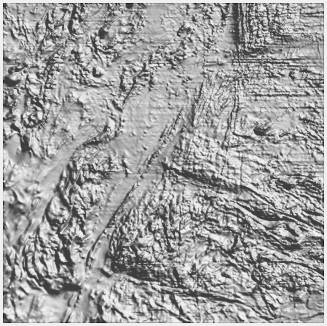
Figure 1a) TMI – Reduced To Pole shaded relief including corrugation contamination in north east quadrant
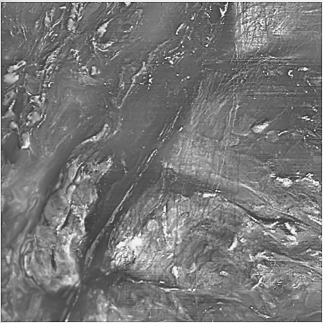
Figure 1b) TMI-RTP stable downward continuation indicating multiple ensembles of conjugate linear features where the basement geology is obscured by Phanerozoic sediments
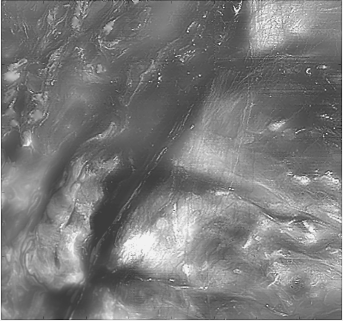
Figure 1c) TMI-RTP upward continuation identifying many linear features but without edge strength indications
This workflow for extracting basement faults computes a multi-scale phase symmetry and congruency attribute response, comprising a stacked average of edge attributes used as the input to fault detection utilizing a ridge detection operator.
- structural features based on the amplitude of the phase congruency of field transforms, which as an edge attribute, is sensitive to faults and edges.
- structural discontinuities sensitive to terminations of features that are expressed as variations in amplitude.
The value mapped on to the detected lineaments is directly related to the phase congruency edge attribute and so represents the likelihood of the fault being present within the field data. This gives an indication of the significance of faults present based on their orientations, lengths and intensities.
Attributes are enhanced so that the final lineaments used in the extraction of basement faults have greater continuity along fault traces. Enhancement is performed using a Gaussian smoothing operator, which improves continuity and improves the effectiveness of extracting basement faults by reducing clutter within the source field.
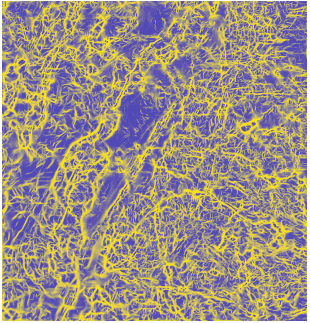
Figure 2a) High scaling factor ensemble phase conjugate edge extraction
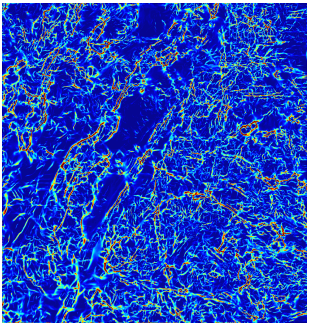
Figure 2b) Edge strength classification of Fig 2a)
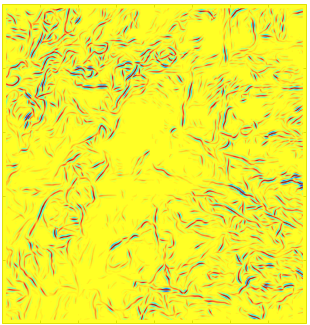
Figure 2c) Fault likelihood map of fault candidates from decluttered Figure 2 b)
The value mapped on to the detected lineaments involved in extracting basement faults is directly related to the edge attribute and so represents the likelihood of the fault being present within the field data.
This gives an indication of the significance of faults present based on their orientations, lengths and intensities. In addition to discrete faults other structural types of displaced edges, such as major shear zones, can be distinguished.
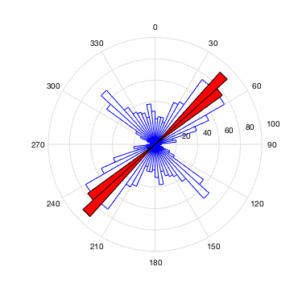
Figure 3a) Rose diagram of expert-guided semi-automated extraction of dominant conjugate set
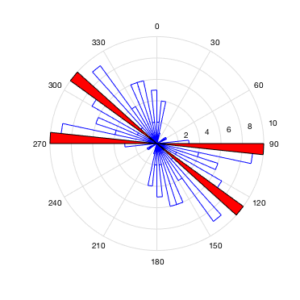
Figure 3b) Rose diagram of expert-guided semi-automated extraction of conjugate set from CBZ
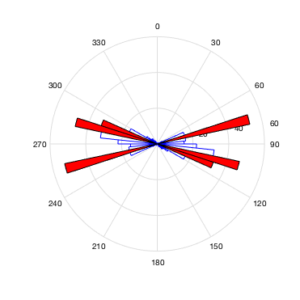
Figure 3c) Rose diagram of conjugate set of Proterozoic brittle-ductile shear zones
As the gravity or magnetic field is upward continued over an ensemble of heights, each level of upward continuation corresponds to a (continuous) scaling.
This workflow for extracting basement faults computes a single-attribute response, comprising a stacked loci of the different corner attributes at multiple scales.
An ensemble arising from connected locations on the ground and draping these sheets results in a loci of the highest density of dipole sources that are the locations of lateral contacts.
- loci resemble lateral contacts and the sense of dip of the contact
- loci connect lateral discontinuities over large regions
- Deep loci typically represent major lateral boundaries
3D interpretation
Eslan Labs offers a choice of workflows for extracting basement faults that enhances the process of identifying and modeling geologic discontinuities such as faults from subsurface gravity and magnetic surveys.
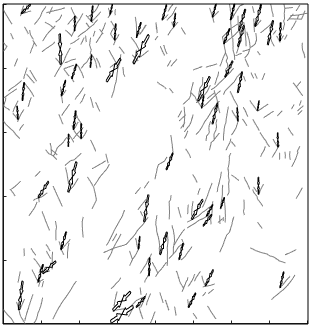
Figure 4a) Extracting basement faults from interpreted conjugate fracture system of Phanerozoic, and related Hmax stress trajectories
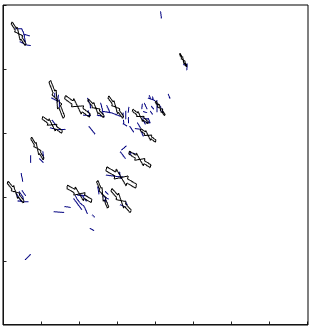
Figure 4b) Interpreted conjugate fracture system of Churchill Boundary Zone, and subset Hmax stress trajectories perpendicular to dominant pattern
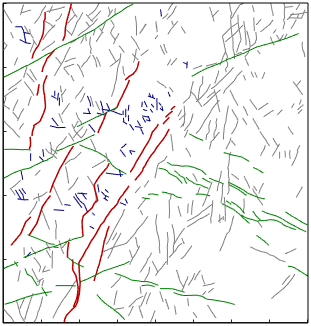
Figure 4c) Extracting basement faults from interpreted linear fracture systems across western Superior Craton and Churchill Boundary Zone: red – craton boundary lineaments, grey – dominant Phanerozoic conjugate fracture systems, blue – subset conjugate fractures of CBZ, green – lineaments of Proterozoic brittle-ductile shears
Some Useful Previous Work
Cook, F.A., van der Velden, A.J., Hall, K.W., and Roberts, B.J., 1999, Tectonic delamination, and subcrustal imbrication of the Precambrian lithosphere in northwestern Canada mapped by LITHOPROBE: Geology, 26, 839-842.
Russell, B., Hampson, D. and Logel, J., 2010, Applying the phase congruency algorithm to seismic data slices: a carbonate case study: First Break, 28, 83-90.